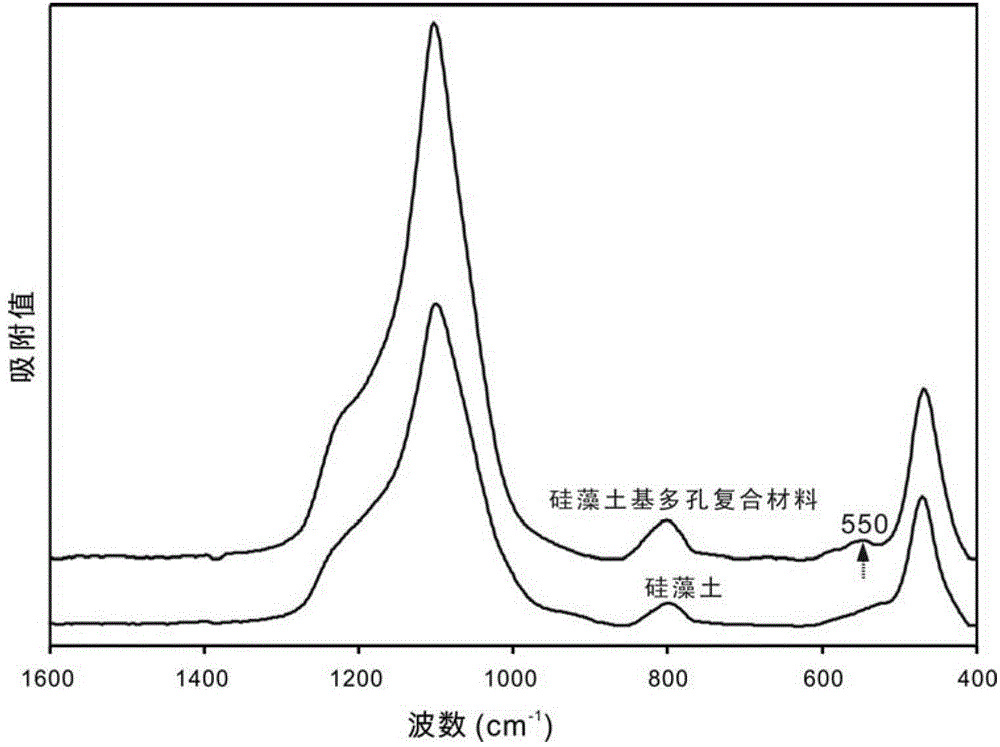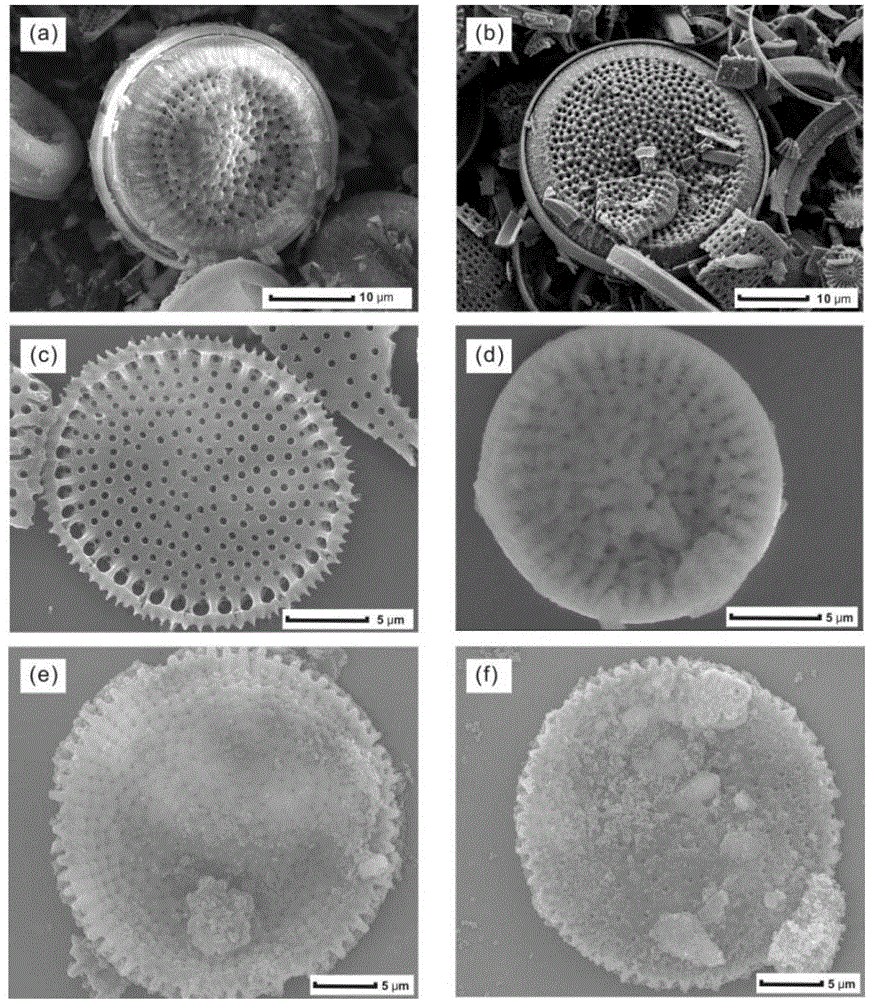Diatomite-based porous composite material for adsorbing volatile organic pollutants and preparation method thereof
A technology of volatile organic and composite materials, applied in chemical instruments and methods, inorganic chemistry, alkali metal compounds, etc., to achieve the effects of low reaction temperature, increased specific surface area and pore volume, and large specific surface area
- Summary
- Abstract
- Description
- Claims
- Application Information
AI Technical Summary
Problems solved by technology
Method used
Image
Examples
Embodiment 1
[0030] 1) 5g of Jilin diatomite purified by sedimentation (the main diatom species of which are diatoms of the order Cynozoria, SiO 2 The mass percent content is 85.78%) was added to 100mL NaOH solution with pH=10, fully stirred at 60°C for 4h, and the suspension was subjected to solid-liquid separation by centrifugation, and the separated solid was washed with water for 4 times and placed at 80°C Dry to constant weight.
[0031] 2) Soak the dried to constant weight solid obtained in step 1) in 100mL polydimethyldiallylammonium chloride solution with a mass fraction of 0.5wt% for 20 minutes, and centrifuge the suspension The solid and liquid were separated, and the solid part was washed 4 times with water.
[0032] 3) Put the solid obtained after washing in step 2) into 100 mL of Silicalite-1 zeolite sol (aqueous sol of Silicalite-1 nanocrystals with an average particle size of about 78 nm) with a concentration of 1.5 wt% and a pH value of 9.5. After 20 minutes, the suspensi...
Embodiment 2
[0038] 1) Add 5g of Jilin diatomite purified by sedimentation (the same diatomite used in Example 1) to 100mL of NaOH solution with pH=13.5, fully stir at 25°C for 72h, and centrifuge the suspension Solid-liquid separation, the separated solid was washed with water for 4 times and then dried at 80°C to constant weight.
[0039] 2) Soak the solid obtained in step 1) dried to constant weight in 100mL polydimethyldiallylammonium chloride solution with a mass fraction of 0.5wt% for 20 minutes, and solidify the suspension by centrifugation. The liquid was separated, and the solid part was washed 4 times with water.
[0040] 3) Put the solid obtained after washing in step 2) into 100 mL of Silicalite-1 zeolite sol (aqueous sol of Silicalite-1 nanocrystals with an average particle size of about 78 nm) with a concentration of 1.5 wt% and a pH value of 9.5. After 20 minutes, the suspension was subjected to solid-liquid separation by centrifugation, and the obtained solid was washed 4 ...
Embodiment 3
[0047] 1) Add 5g of Jilin diatomite purified by sedimentation (the same diatomite used in Example 1) to 100mL of NaOH solution with pH=13.5, fully stir at 25°C for 72h, and centrifuge the suspension Solid-liquid separation, the separated solid was washed with water for 4 times and then dried at 80°C to constant weight.
[0048] 2) Soak the solid dried to constant weight in step 1) in 100mL polydimethyldiallylammonium chloride solution with a mass fraction of 0.5wt% for 20 minutes, and perform solid-liquid separation of the suspension by centrifugation. Separated, the solid portion was washed 4 times with water.
[0049] 3) Soak the solid obtained after washing in step 2) in 100 mL of Silicalite-1 zeolite sol (aqueous sol of Silicalite-1 nanocrystals with an average particle size of about 78 nm) with a mass fraction of 1.5 wt % and a pH value of 9.5 After sedimentation for 20 minutes, the suspension was subjected to solid-liquid separation by centrifugation, and the obtained s...
PUM
| Property | Measurement | Unit |
|---|---|---|
| particle size | aaaaa | aaaaa |
| specific surface area | aaaaa | aaaaa |
| specific surface area | aaaaa | aaaaa |
Abstract
Description
Claims
Application Information
 Login to View More
Login to View More - R&D
- Intellectual Property
- Life Sciences
- Materials
- Tech Scout
- Unparalleled Data Quality
- Higher Quality Content
- 60% Fewer Hallucinations
Browse by: Latest US Patents, China's latest patents, Technical Efficacy Thesaurus, Application Domain, Technology Topic, Popular Technical Reports.
© 2025 PatSnap. All rights reserved.Legal|Privacy policy|Modern Slavery Act Transparency Statement|Sitemap|About US| Contact US: help@patsnap.com



